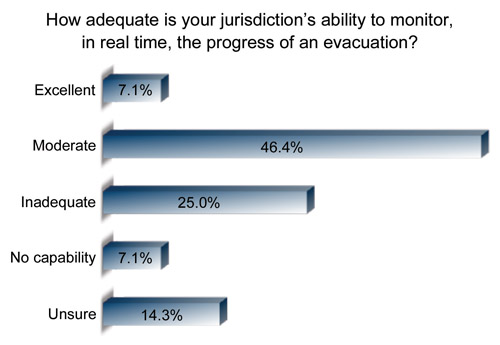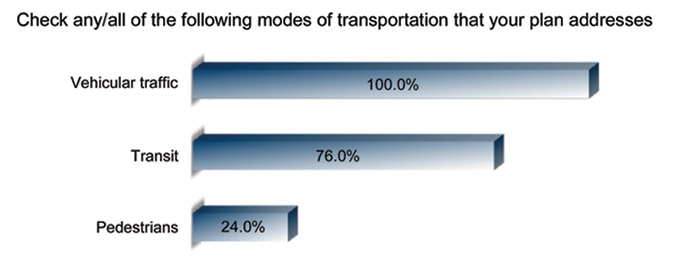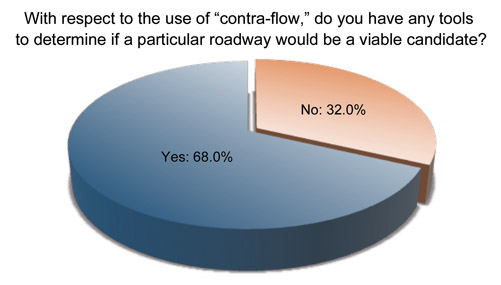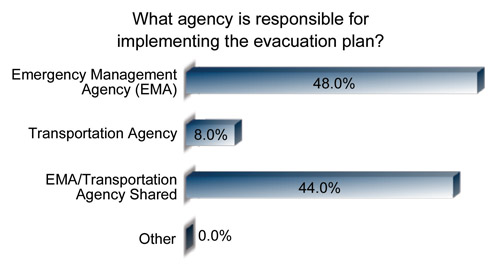 DomPrep wants to know DPJ readers’ opinions on the nationwide progress of evacuation planning. In 2006, when the U.S. Department of Transportation (DOT) and U.S. Department of Homeland Security (DHS) evaluated and reviewed the Gulf Coast states’ catastrophic-hurricane evacuation plans, they found a number of areas in need of improvement – in the multi-jurisdictionalentification of weaknesses in specific plan elements, for example. Today, one wonders, is that still the case?
DomPrep wants to know DPJ readers’ opinions on the nationwide progress of evacuation planning. In 2006, when the U.S. Department of Transportation (DOT) and U.S. Department of Homeland Security (DHS) evaluated and reviewed the Gulf Coast states’ catastrophic-hurricane evacuation plans, they found a number of areas in need of improvement – in the multi-jurisdictionalentification of weaknesses in specific plan elements, for example. Today, one wonders, is that still the case?
DomPrep40 member John Contestabile (pictured), the assistant program manager for homeland protection at the Johns Hopkins University’s Applied Physics Lab, is among those who want to find out. As the former director for engineering and emergency services at the Maryland Department of Transportation, he has for many years had a vital professional as well as personal interest in getting the evacuation details right.
“Evacuation plans are an essential component of almost every major disaster,” Contestabile points out. But “inevitably,” he continues, citing numerous after-action reviews, “they seem to go badly.” At all levels of response, and responsibility, the federal, state, and local jurisdictions of government are required to develop effective evacuation plans and to have those plans in place before, not after, disaster strikes. This is not an easy task, he acknowledges. A major evacuation “is a multi-jurisdictional/multi-agency drill.” Also, because more grant funding has been allocated in recent years to interoperable communications “and to the acquisition of other ‘gear’ – not in itself a bad thing, to be sure – one wonders … how many jurisdictions are where they need to be on comprehensive  evacuation planning.”
evacuation planning.”
Because so many hurricanes hit various areas of Florida each and every year, that state is one that seems to be reasonably proficient in planning for, and carrying out, major evacuations. “But,” Contestabile asks, “could this be more the result of practice than planning? And how many other jurisdictions [throughout the country] can say they have that same level of experience needed to do evacuation planning properly?”
Key Findings: Evacuation planning is, in fact, progressing in many if not all states, but still seems oriented to vehicular paradigms. Nonetheless, it is somewhat surprising that transportation agencies are not more widely represented as lead agencies in the development of evacuation plans. Moreover, at least some state plans may need to “mature” by, among other things, expanding the “special categories” of likely evacuees that should be included in the plans – the state’s (or community’s) transit-dependent and prison populations, for example.
With these thoughts in mind, Contestabile drafted the following DomPrep survey questions to assess the opinions of the DP40, and of DPJ readers in general, on the current status of evacuation planning throughout the United States.
Following are the complete DP40 survey results: About half of those responding say that their jurisdictions have “very” or “moderately” mature and comprehensive plans, but over 35 percent say that those plans are “inadequate.”

Just under 70 percent say that their jurisdictions have not conducted an evacuation in the last five years. In other words, actual experience in this type of event is lacking.

About half say that their jurisdictions have an excellent or moderate real-time ability to monitor an evacuation. This survey result is more reassuring than several of the others.

Perhaps not surprisingly, vehicular traffic is well addressed. Much less focused, though, is the plan for pedestrians. Only a quarter of respondents, in fact, say that pedestrians are adequately covered in their jurisdictions’ plans.

Just over two-thirds say that their plans have the tools needed for determining candidate contra-flow roadways. This result suggests that those jurisdictions whose contra-flow considerations should be updated and expanded can look to other jurisdictions to find working examples of the tools needed.

Also not surprisingly, the data sources for automated tools rely heavily on traffic data, raising the question as to whether behavioral models have been written off or simply not considered. Here it is worth noting that one in five of those responding said that their jurisdictions do not use automated tools.

Overwhelmingly, it is the Emergency Management and Transportation Agencies involved, with 48 percent of the DP40 saying that their jurisdictions have made their emergency management agencies responsible for evacuation plans; 44 percent said that emergency management shared the responsibility with transportation; only eight percent said that the plans were solely the responsibility of their transportation agencies.

Only 12 percent said their plans did not provide for special-needs populations. Fifty percent said that all categories of special-needs populations are covered. Transit-dependent and pet populations came up a little short, though – and prison populations were largely ignored, with just over 20 percent of DP40 members saying that prison populations were included in their jurisdictions’ evacuation plans.

Now is the time for DomPrep readers to voice their own opinions on the evacuation planning process. Take the Survey Now!






